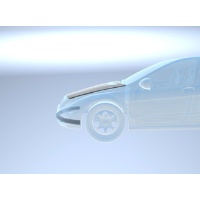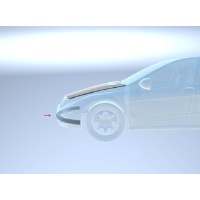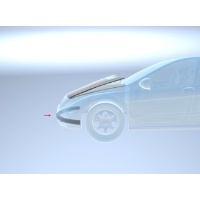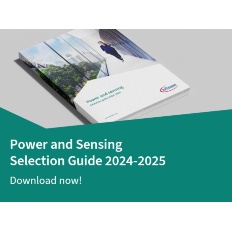Pressure sensors for side crash detection (SAB)
How XENSIV™ safety crash detection sensors make cars safer - PSI5 PRO-SIL™-ready pressure sensors for side impact detection and pedestrian protection
Infineon's XENSIV™ family of collision detection sensors for vehicles includes integrated impact pressure sensors that are long-lasting, accurate, and versatile, equipped with PSI5 peripheral interfaces that convert and send electric signals from sensors to electronic control units (ECUs). Our sensors fully adhere to ISO 26262 compliance.
- Long lasting
- Accurate
- Versatile
- PSI5 peripheral interfaces
- Highest quality
- Accuracy standards
Front and side impact sensor's locations
Impact detection sensors used in cars for safety are generally located at the front of a vehicle, as this is the area where accidents occur most often. These sensors get alerted by a vehicle’s sudden deceleration. They measure collision intensity; if it is determined that airbags need to be released, sends an electric signal to the SRS control system. Side impact sensors also measure the collision intensity, but within the passenger doors on the sides of a car, they measure the pressure changes that occur inside the doors due to external impact.
Infineon's XENSIV™ family of collision detection sensors
Infineon's XENSIV™ family of collision detection sensors for vehicles includes integrated impact pressure sensors that are long-lasting, accurate, and versatile, equipped with PSI5 peripheral interfaces that convert and send electric signals from sensors to ECUs. Our car crash detection sensors operate with cutting-edge safety systems that increase the protection of car occupants and pedestrians in the event of a collision. Pedestrian protection and impact pressure sensors meet the highest quality and accuracy standards, fully adhering to ISO26262 compliance. Despite needing only two impact detection sensors, Infineon safety crash impact sensors deliver a reliable signal at an industry-leading reaction time.
Front impact sensors in cars
All front impact sensors for a car work in concert with its supplemental restraint system (SRS). The SRS is a passive system which controls the deployment of airbags and seatbelt restraints. When the front impact sensors sense a crash situation of the car, they send electric signals to the SRS. The SRS then compares this data with the car’s yaw rate and, if needed, sends a signal to deploy the necessary airbags via the airbag pressure switch and seatbelt restraints.
Side impact sensors
Crash detection sensors in the side of a vehicle, XENSIV™ KP 200/204, react to pressure changes that occur in the doors. One left front side impact sensor is located inside the driver door and one right front impact sensor in the passenger door. Similarly, the left and right rear side impact sensor locations are inside the rear doors. When a vehicle sustains lateral impact, these sensors in the affected door(s) observe the change of pressure inside. Within these sensors, a microprocessor analyzes the pressure information and determines whether to send a collision signal to the SRS. If and when that signal reaches the SRS system, the SRS determines which door(s) to deploy airbags from and sends the appropriate signal.
XENSIV™ front impact sensors for pedestrian protection
The benefits of these front-facing impact sensors in a car are clear. They are instant, accurate, and durable; the Infineon XENSIV KP 201 sensor, for example, is specially designed to withstand high engine heat by being operational in temperatures up to 125 degrees Celsius. However, they do not present a catch-all solution to passenger or pedestrian safety. Auto manufacturers’ mounting need to address an increase in lateral accidents has brought about innovations in side-impact safety technology and equipment. More than ever before, it is now becoming standard that cars be fitted with right and left rear side impact sensor locations, in addition to front sensors.
Find information relating to the planned long-term availability of semiconductor products “Longevity” for Sensor products.
Download gallery documents
 |
 |
 |
Fast finder
Welcome to our new interactive sensor selection tool, designed to connect you with the best fit for your design as quickly and effortlessly as possible. Simply select the overarching industry (automotive or industrial/consumer) and drill down on the applications till you find your target use case. The selection tool will then tell you what Infineon XENSIV™ sensor is the best choice for your design. It couldn’t be easier.





